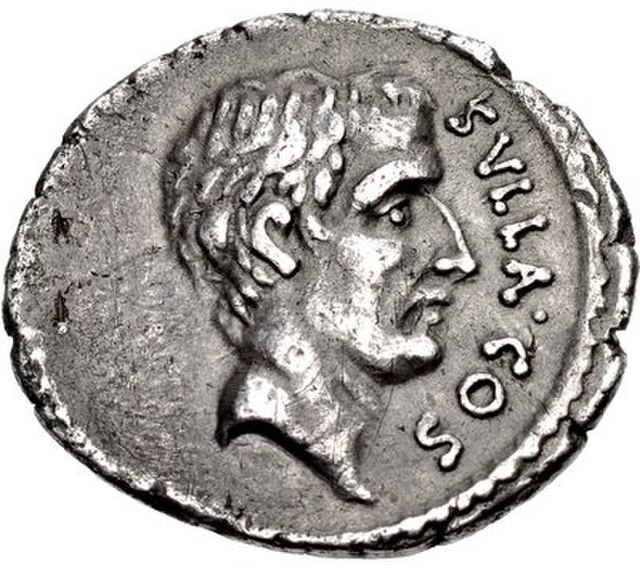Caesar is a title of imperial character. It derives from the cognomen of the Roman dictator Julius Caesar. The change from being a surname to a title used by the Roman emperors can be traced to AD 68, following the fall of the Julio-Claudian dynasty. When used on its own, the title denoted heirs apparent, which would later adopt the title Augustus on accession. The title remained an essential part of the style of the emperors, and became the word for "emperor" in some languages, such as German (kaiser) and Russian (tsar).
Sculpture depiction of Julius Caesar
The Roman emperor Constantine the Great, mosaic in Hagia Sophia, Constantinople
Mehmed II and Ecumenical Patriarch of Constantinople Gennadios.
Gaius Julius Caesar was a Roman general and statesman. A member of the First Triumvirate, Caesar led the Roman armies in the Gallic Wars before defeating his political rival Pompey in a civil war, and subsequently became dictator from 49 BC until his assassination in 44 BC. He played a critical role in the events that led to the demise of the Roman Republic and the rise of the Roman Empire.
The Tusculum portrait, possibly the only surviving sculpture of Caesar made during his lifetime
Gaius Marius, Caesar's uncle and the husband of Caesar's aunt Julia. He was an enemy of Sulla and took the city with Lucius Cornelius Cinna in 87 BC.
Sulla, depicted on a coin minted by Quintus Pompeius Rufus in 54 BC. Sulla took the city in 82 BC, purged his political enemies, and instituted new constitutional reforms.
Bust, from the imperial period, of a man – in this case Augustus – wearing the civic crown (Latin: corona civica). Caesar won the civic crown for his bravery at the Siege of Mytilene in 81 BC.







